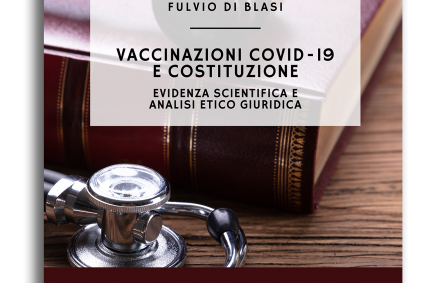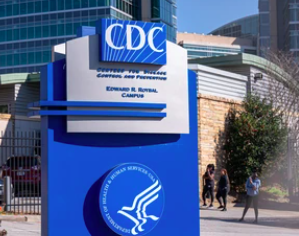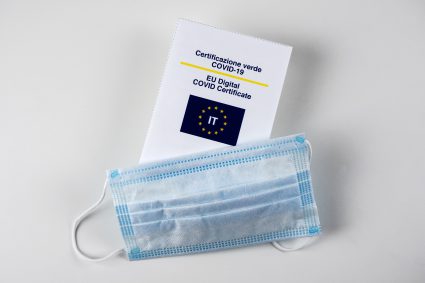di Fulvio Di Blasi
MedEthica 1/2022
A few days ago, in response to a request for information based on the American law known as the Freedom of Information Act (FOIA), the United States’ CDC declared that, prior to October of 2021, there was no known link between the mRNA vaccine against COVID-19 and myocarditis. [1]
The FOIA request included all documents in the CDC’s possession that related to the pharmacovigilance data on myocarditis and pericarditis during the time period between April 2 and October 2 of 2021. This request received the reply that there were no documents to which access could be granted because “an association between myocarditis and mRNA COVID-19 vaccination was not known at that time.” [2]
Please take note of the vague nature of this response. It does not indicate, for example, that in that period a particular kind of correlation had not been verified, or that various different possible aspects of such a correlation were being studied and monitored, but instead indicates that the very concept that those two phenomena—myocarditis and mRNA vaccines against COVID-19—could possibly be linked was entirely unknown.
I do not intend to linger here to explore the reasons why the CDC might wish to give this sort of public information regarding the question at hand. The falsity of this response, however, can be easily demonstrated in many ways, and here I would like to point out a few that are particularly obvious.
1. The June 10, 2021 Meeting of the FDA’s Scientific Committee
One very simple way is through reference to the independent Scientific Committee of the FDA (VRBPAC), which met on June 10, 2021, to address the topic of pediatric vaccination against COVID-19. [3] At that meeting, Dr. Tom Shimabukuro, the Vaccine Safety Team Lead for the CDC, specifically conveyed to the Committee members and to the FDA experts in attendance some observations and analyses of pharmacovigilance data purposely gathered by his office. Dr. Shimabukuro’s presentation was followed, therefore, by a full discussion—based also on data gathered in Israel—specifically about myocarditis and pericarditis as side effects of the vaccines. [4]
Moreover, at a later time during the meeting, regarding the pharmacovigilance data and its relation to the topic of the pediatric population, it was said that
“In a May 24th meeting, the CDC advisory group said the data from the VAERS reporting system showed a higher than expected number of observed myocarditis or pericarditis in ages 16 to 24 years old.” [5]
Following the report from the CDC expert, Dr. Shimabukuro, one of the FDA’s Committee members, Dr. Cody Meissner, explicitly expressed his opinion on the advisability of reporting this risk in the package leaflets. In order to better understand the level of awareness of this issue and of the concerns that already existed in its regard in June of 2021, it is helpful to read a few extracts from Dr. Meissner’s observations:
“So I’d like to go back to the myocarditis issue because I think that’s going to be very relevant for adolescents and children when we’re weighing the benefit of risk. I mean, I can’t help but be struck by the fact that it occurs more commonly after a second dose, as a pretty specific interval of time. It’s primarily after the mRNA vaccines as far as we know. We know that there’s consistent age. There’s a lack of alternative explanations, even though these patients have been pretty well worked up. And it’s a widespread occurrence because Israel, as you said, has found a pretty similar situation. So the question that I would like for you to clarify is can you restate the rates of occurrence of vaccine-induced thrombosis, thrombocytopenia that occurs in women in their 30s and 40s, and the rate that you suggested for the occurrence of myocarditis that’s occurring in adolescents and young children? […] So the risk of myocarditis in the high-risk adolescents is on the same order of magnitude of the risk of VITT [vaccine-induced thrombosis], at least based on our available data. Is that correct? […] my thought was should this be included in informed consent? Because there is — I think it’s hard to deny that there’s some event that seems to be occurring in terms of myocarditis.”[6]
Independent from the opinions expressed by Dr. Meissner, there is no doubt that the CDC—long before October 2021—already possessed ample documentation on this topic and that the response to the FOIA request was an outright lie. Moreover, anyone who followed (even from a distance) the debate regarding adverse effects of the vaccines knows full well that the discussion of the topic of myocarditis and pericarditis – especially as concerned the young male population – was already very intense throughout the world by the Spring of 2021.
2. The EMA’s Updates on the Safety of the Pfizer Vaccine
Let’s now move away from the United States to Europe for four fundamental reasons. The first is that the European regulatory body, called the European Medicines Agency (EMA), which is significantly smaller and less powerful than the American FDA and the CDC, generally followed the FDA’s decisions by a couple of weeks. [7] If the EMA works on or makes decisions about certain aspects of the vaccines, it is mathematically certain that the corresponding US bodies have already worked on those same aspects before and much more. The second is that the EMA, as regards vaccine production companies, works with the same data and studies that are made available to the FDA and the CDC. The third is that if the EMA, even independently from its corresponding American entities, studies and reaches a decision on a topic as important as the negative side effects of the same vaccines which are being studied by the FDA and the CDC, it is unthinkable that those American entities not have that knowledge and not be tackling the same topics. The fourth is that, unlike the FDA’s website, the EMA’s website allows us to easily verify the history of updates on vaccine safety.
So, what was the EMA doing during the time period in question?
The EMA began to discuss the question of a possible connection between the vaccine and myocarditis and pericarditis in its Safety Update from May 11, 2021 [8]; it repeated its concerns in its Update from June 18, 2021 [9]; and finally decides to add it to the side effects in Pfizer’s package leaflet on July 14, 2021. [10]
Already on July 19, 2021, moreover, the EMA published a detailed guide on this topic for doctors and healthcare professionals. [11]
In the face of a discussion in Europe so dynamic that it led to the specific inclusion of this risk in the information statements in the month of July, if it were true that the CDC still was completely unaware in October of 2021 of the existence of a connection between the COVID-19 vaccines and myocarditis and pericarditis (“an association between myocarditis and mRNA COVID-19 vaccines was not known”), then the scientific credibility of the American CDC, with its multibillionaire budget, would be worth less than that of any citizen who follows the international debate on vaccine safety. At any rate, we know that this was not the case, at least not at the aforementioned meeting of the FDA Committee. The CDC knew perfectly well about the problem and had been working on it for some time.
3. The Scandal of Safety Data Hidden from the Public
It is particularly disconcerting that the CDC is trying today to hide things from the public that are so obvious from the history of mRNA vaccines against COVID-19. It is worth remembering, in this regard, that it was that very same American CDC that found itself in February 2022 caught up in a bipartisan journalistic scandal (that is, which even included government-loving branches of the media as far as pandemic politics are concerned) when it was discovered that the CDC was not publishing data on vaccine safety to avoid vaccine hesitancy among the public. [12]
What emerges from these scandals and these lies is truly serious. The CDC is one of the most important entities for the U.S. Department of Health & Human Services, and it ought to produce confidence in American citizens based on its having the highest level of trustworthiness, based not only on competence, but also on transparency and ethical practices. How can anyone trust an entity that does not inform citizens about a drug’s side effects due to its fear that those citizens might—by making use of their right to informed consent—decide not to use that drug or to limit its use? How can anyone trust healthcare authorities if they try to violate informed consent, driving citizens toward predetermined choices by means of lies and the concealment of relevant data?
Now the communications experts at the CDC are trying their best to cushion the blow of this alarming lie about myocarditis with their usual approach of making things that are black and white into shades of gray: “Maybe a miscommunication occurred, but…” “In the end, what was meant was…,” etc. These efforts by the media PR team officials to save the salvageable only confirm and intensify the problem.
Unfortunately, the lack of trust in the healthcare system and in the branches of government dedicated to that field is one of the most serious and obvious negative side effects caused by the way that the pandemic has been handled by the greater part of the Western nations. Healing this wound will require an enormous commitment to accuracy and transparency going forward, even if that were to require revealing inconvenient responsibilities for those who found themselves in the control room during the pandemic. A better future will necessarily need to be built on truth, not on conflicts of interest, lies, and ambiguity.
For an oral presentation on this article’s topic, click here!
[1] See Z. Stieber, “EXCLUSIVE: CDC Claims Link Between Heart Inflammation and COVID-19 Vaccines Wasn’t Known for Most of 2021,” The Epoch Times, August 4, 2021, https://www.theepochtimes.com/exclusive-cdc-claims-link-between-heart-inflammation-and-covid-19-vaccines-wasnt-known-for-most-of-2021_4638716.html?utm_source=ishare1&utm_campaign=ishare-journey-1&utm_medium=email&instaaccount=fulviodiblasi%40gmail.com&rs=SHRDSSMTF&.
[2] Ibid.
[3] This is a link to the transcription of the meeting of the FDA’s independent Scientific Committee which took place on June 6, 2021 https://www.fda.gov/media/150815/download. The FDA provides all the meeting materials on its website, including a recorded livestream of the entire event: cfr. https://www.fda.gov/advisory-committees/advisory-committee-calendar/vaccines-and-related-biological-products-advisory-committee-june-10-2021-meeting-announcement.
[4] See the transcription of the FDA’s independent Scientific Committee’s meeting on June 6, 2021, cit., pp. 89-112.
[5] Ibid. pp. 184 ff.
[6] Ibid. pp. 108-111.
[7] Just think that the FDA and the CDC, which work together on vaccines (and which complain about having insufficient resources), have an annual budget of about $20 billion, while the EMA has a budget of barely $500 million.
[8] See Safety update of the EMA from May 11, 2021, https://www.ema.europa.eu/en/documents/covid-19-vaccine-safety-update/covid-19-vaccine-safety-update-comirnaty-11-may-2021_en.pdf.
[9] See Safety update of the EMA from June 18, 2021, https://www.ema.europa.eu/en/documents/covid-19-vaccine-safety-update/covid-19-vaccine-safety-update-comirnaty-18-june-2021_en.pdf.
[10] See Safety update of the EMA from July 14, 2021, https://www.ema.europa.eu/en/documents/covid-19-vaccine-safety-update/covid-19-vaccine-safety-update-comirnaty-14-july-2021_en.pdf.
[11] See EMA, Direct healthcare professional communication (DHPC), July 19, 2021, https://www.ema.europa.eu/en/medicines/dhpc/covid-19-mrna-vaccines-comirnaty-spikevax-risk-myocarditis-pericarditis.
[12] See ad es., S. Watson, “Report: CDC Has Withheld COVID Data From Americans To ‘Prevent Vaccine Hesitancy’,” Summit News, February 21 2022, https://summit.news/2022/02/21/report-cdc-has-withheld-covid-data-from-americans-to-prevent-vaccine-hesitency/?fbclid=IwAR2dL1UNq9O_x01_ltehVoRIcsnn5uKTk1Z5LolSyg29IcXBUFlRrE7256E; E. Crane, “CDC Withholding COVID Data over Fears of Misinterpretation,” New York Post, February 22, 2022, https://nypost.com/2022/02/22/cdc-withholding-covid-data-over-fears-of-misinterpretation/; The New York Times, “The C.D.C. Isn’t Publishing Large Portions of the Covid Data It Collects,” February 22, 2022, https://www.nytimes.com/2022/02/20/health/covid-cdc-data.html.








